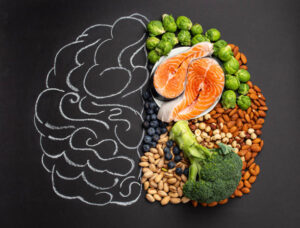Veganism is one of the healthiest things you can do for yourself and the world, but is it really as easy as people say? Definitely! When you’ve been an omnivore your entire life, it can seem intimidating transitioning to a vegan diet.
Transitioning to a vegan lifestyle requires careful planning and a thoughtful approach. Here’s a step-by-step guide to help you smoothly transition to a vegan diet.
1. Educate Yourself
Finding your reason for becoming a vegan is important, but so is learning how to lead a healthy vegan life. Most people who eat a balanced plate do not get sick if they go vegan for a week. Know which foods provide you with the nutrients you need, and eat a variety of them.
2. Don’t Rush
Go at your own pace while keeping your end goal in mind. Depending on your situation, you might be able to go vegan overnight. Feel free to take as long as you need. It takes time to figure out what works for you when going vegan, like any other lifestyle change. There are many ways to approach this experience, so there is no one-size-fits-all approach.
You can easily increase your intake of plant-based foods by making small changes to your daily meals. Starting one day a week, you could gradually eliminate meat and dairy. In a week, you could have vegan breakfasts, add vegan lunches in week two, and so on. You don’t have to miss out on any of your favorite foods because there are plant-based alternatives for most foods.
3. Experiment with New Things
Give your taste buds a treat by trying new foods and flavors. You will discover new cuisines when you leave your comfort zone. Every corner of the world has vegan recipes. Your favorite dishes will be reimagined and adapted in new and interesting ways. To accomplish this, you do not need to be an accomplished chef. If you shop at your local zero-waste stores, you’ll be surprised how many meals you can make easily.
4. Gradually Reduce Animal Products
Instead of eliminating all animal products overnight, consider a gradual approach. Start by identifying your favorite animal-based foods and gradually reduce their consumption.
You might begin with meatless Mondays, focusing on plant-based meals for just one day a week. Over time, increase the number of days you avoid meat, dairy, and eggs. This gradual transition can help your palate adjust to new flavors and textures while making the process feel less overwhelming.
5. Easy Swaps
Once you’ve begun to cut down on animal products, it’s time to explore simple swaps that can make the transition easier:
- Plant-Based Milk: Substitute cow’s milk with almond, soy, oat, or coconut milk. Most stores carry a variety of options, and many brands offer unsweetened versions for those watching their sugar intake.
- Tofu and Tempeh: Replace meat in your dishes with tofu or tempeh. These protein-rich foods can absorb flavors from marinades and spices, making them incredibly versatile.
- Vegan Butter and Cheese: Many brands offer dairy-free butter and cheese alternatives that can seamlessly replace their animal-based counterparts in cooking and baking.
- Egg Substitutes: Use flaxseed meal or chia seeds mixed with water as a binding agent in recipes. For scrambles, try chickpea flour or silken tofu seasoned with turmeric for color and flavor.
6. Emphasize Planning and Meal Prep
Planning is key to successfully transitioning to a vegan diet. Start by researching and collecting vegan recipes that appeal to you. Create a weekly meal plan that incorporates a variety of fruits, vegetables, grains, legumes, nuts, and seeds to ensure balanced nutrition.
Meal prepping can save time during busy weeks and help you resist the temptation to revert to old habits. Consider batch-cooking soups, stews, and grain bowls to have ready-made meals on hand.
7. Learn to Prepare Balanced Vegan Meals
As you shift to a vegan diet, focus on learning how to create nutritionally balanced meals. Pay attention to macronutrients (proteins, fats, and carbohydrates) and include a variety of colorful fruits and vegetables. Aim to incorporate:
- Whole grains: Quinoa, brown rice, barley, and oats.
- Legumes: Lentils, chickpeas, black beans, and kidney beans.
- Healthy fats: Avocado, nuts, seeds, and olive oil.
- Leafy greens: Spinach, kale, and collard greens for added nutrients.
8. Maintain Motivation
Staying motivated during your transition is crucial. Here are some tips to keep your enthusiasm alive:
- Connect with Others: Join online communities or local groups focused on veganism. Engaging with like-minded individuals can provide support, encouragement, and inspiration.
- Explore New Foods: Try new fruits, vegetables, and grains you’ve never tasted. Experimenting with different recipes can reignite your excitement for plant-based cooking.
- Set Realistic Goals: Rather than aiming for perfection, set achievable goals. Celebrate your progress, whether trying a new recipe or going a week without animal products.
9. Handling Social Situations
Navigating social situations can be challenging when transitioning to a vegan diet. Here are some strategies to make it easier:
- Communicate: Let friends and family know about your dietary choices. Most people are willing to accommodate if they understand your preferences.
- Bring Your Dish: When attending gatherings or parties, consider bringing a vegan dish to share. This ensures there’s something you can enjoy and introduces others to delicious plant-based options.
- Research Restaurant Menus: Before dining out, check menus online to identify vegan-friendly options. Many restaurants now offer plant-based dishes.
10. Never give up
Veganism will soon become second nature if you believe in yourself. Sticking with your decision is always better than going against it. You can find some advice on socializing and how to resolve problems with friends and family in our sections on socializing and solving problems. Don’t forget that you can join vegan groups both online and offline.
Take it one day at a time and remember to have fun along the way. Enjoy living an exciting, profound, and amazing life – you’ve chosen well.
Conclusion
Transitioning to a vegan diet is a personal journey that can lead to improved health, ethical satisfaction, and environmental benefits. By taking gradual steps, making thoughtful food swaps, and planning meals, you can ease into this lifestyle change. With the right mindset, support, and knowledge, the transition to a vegan diet can be both enjoyable and fulfilling.







